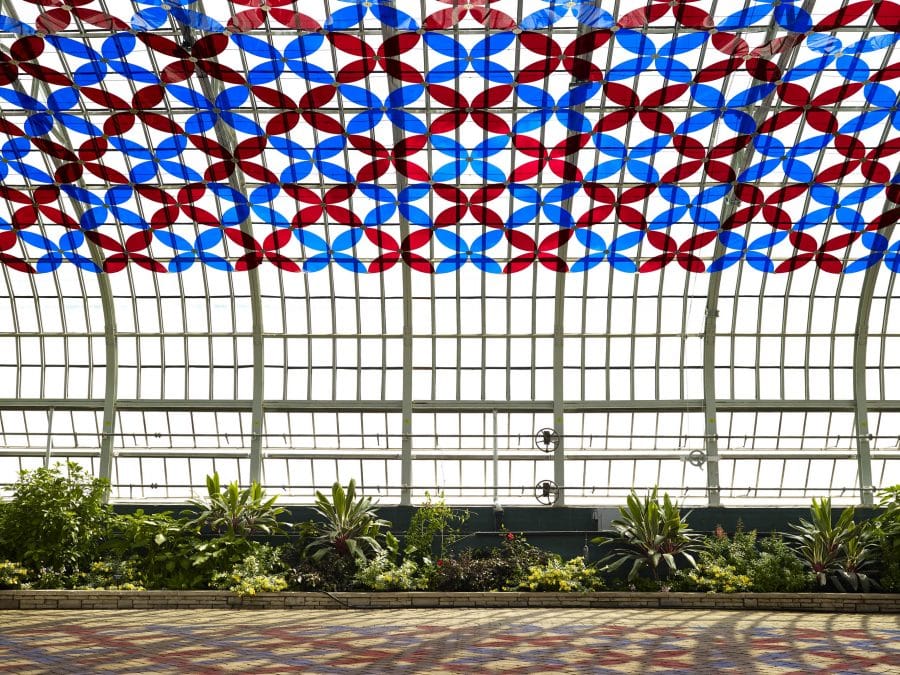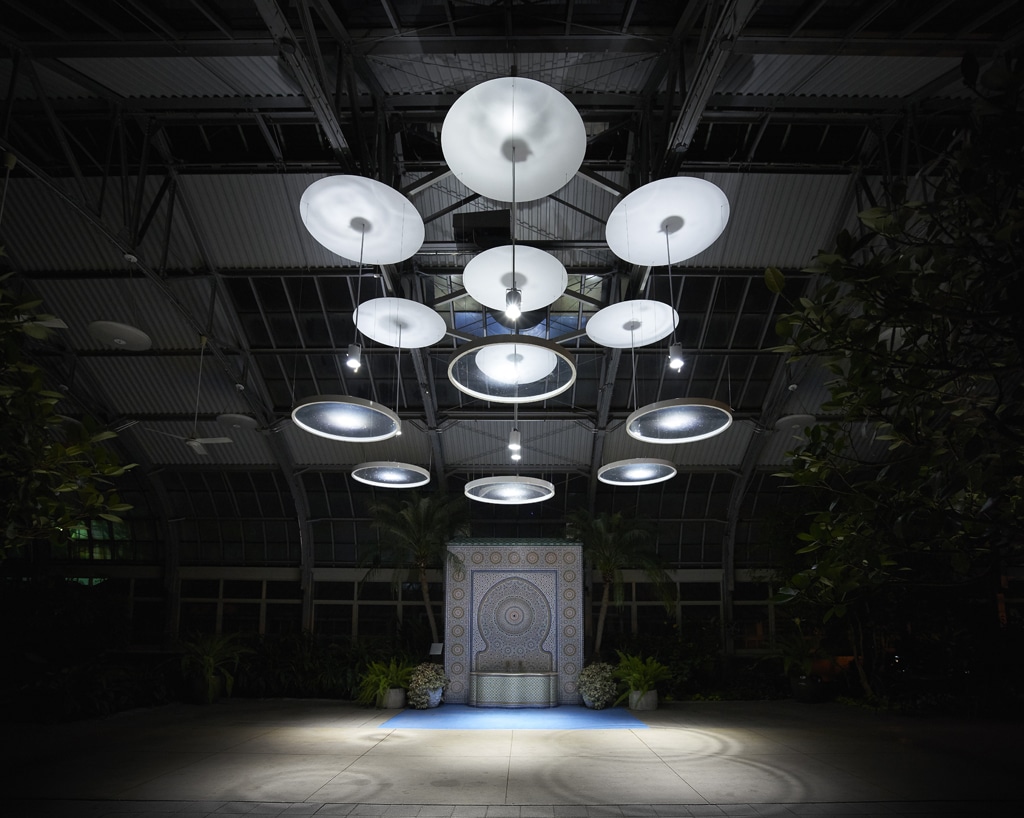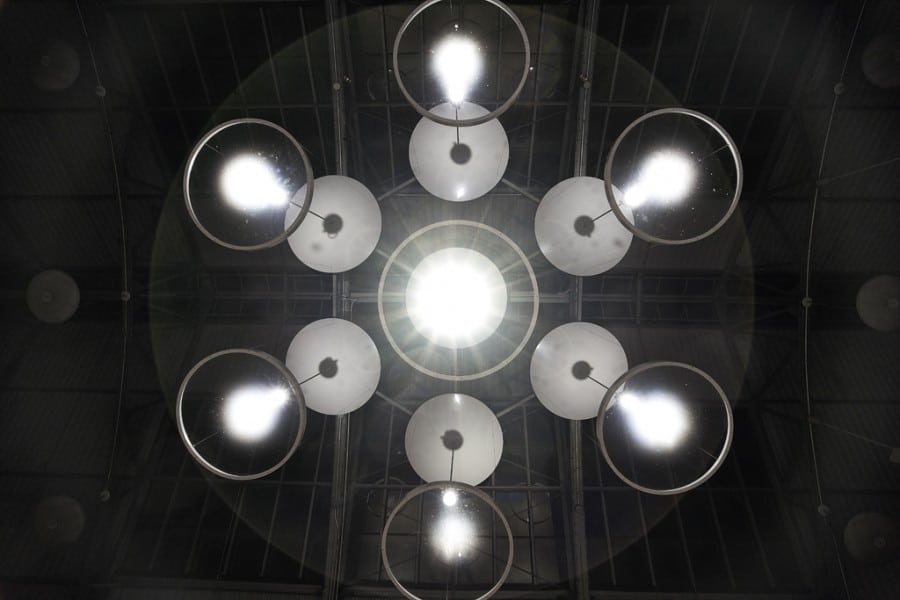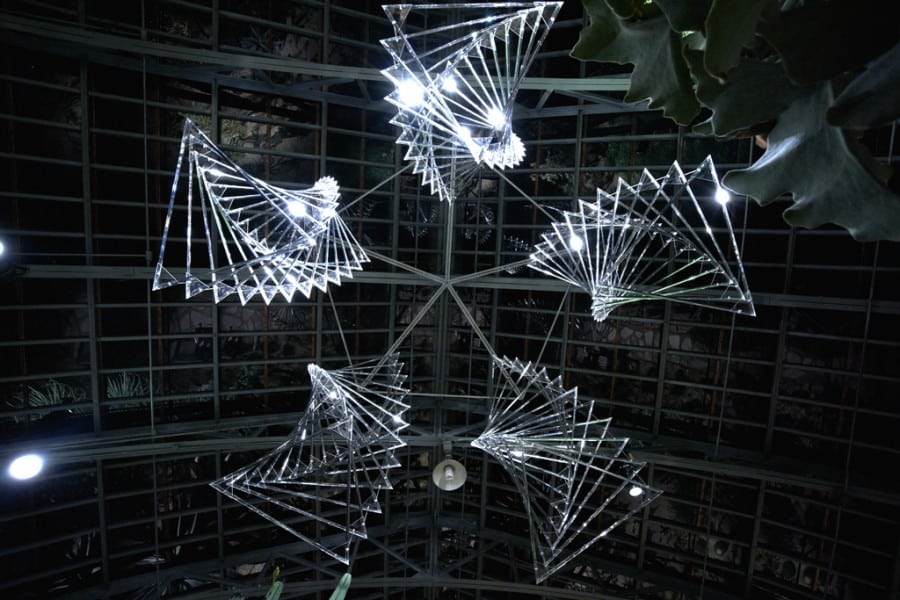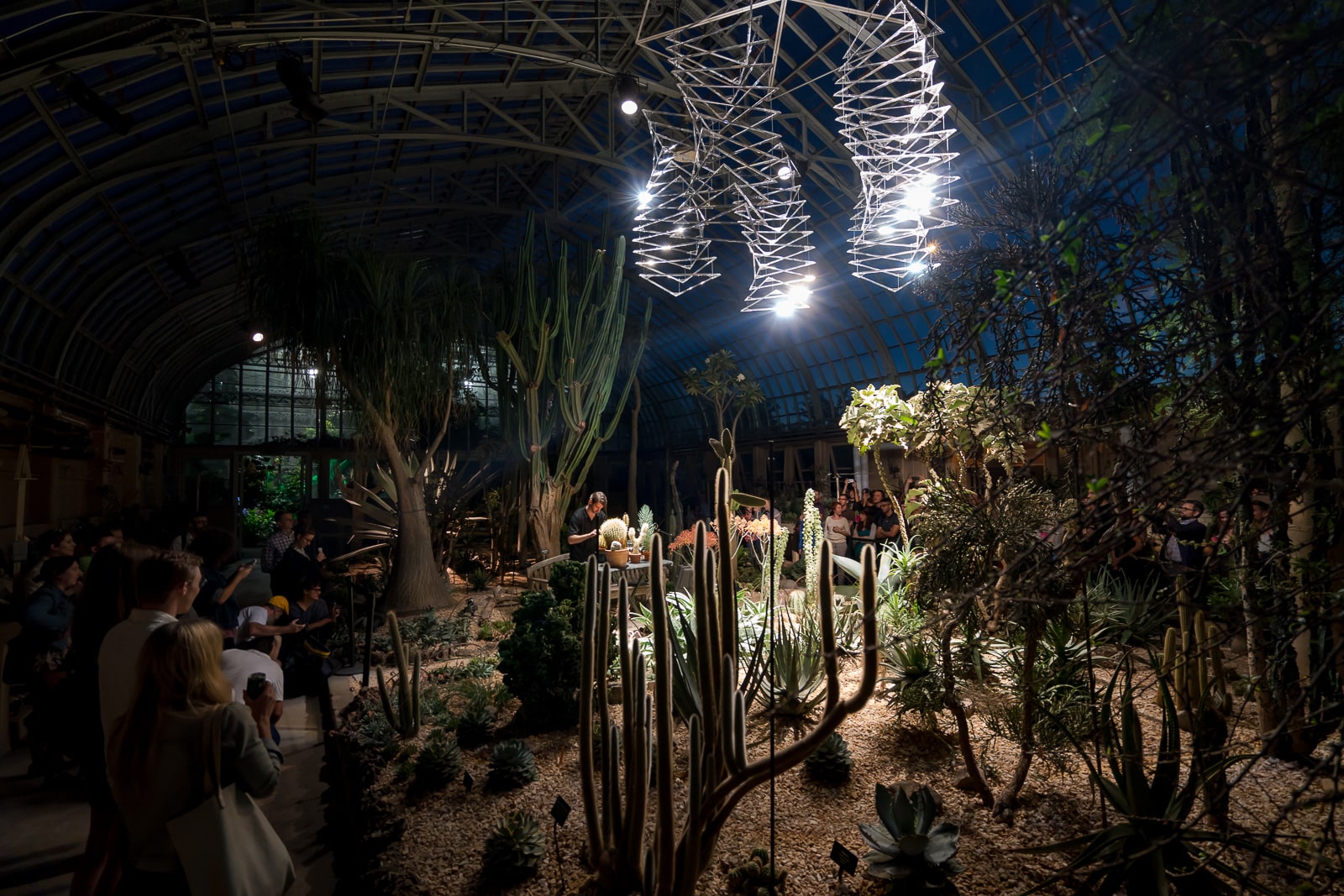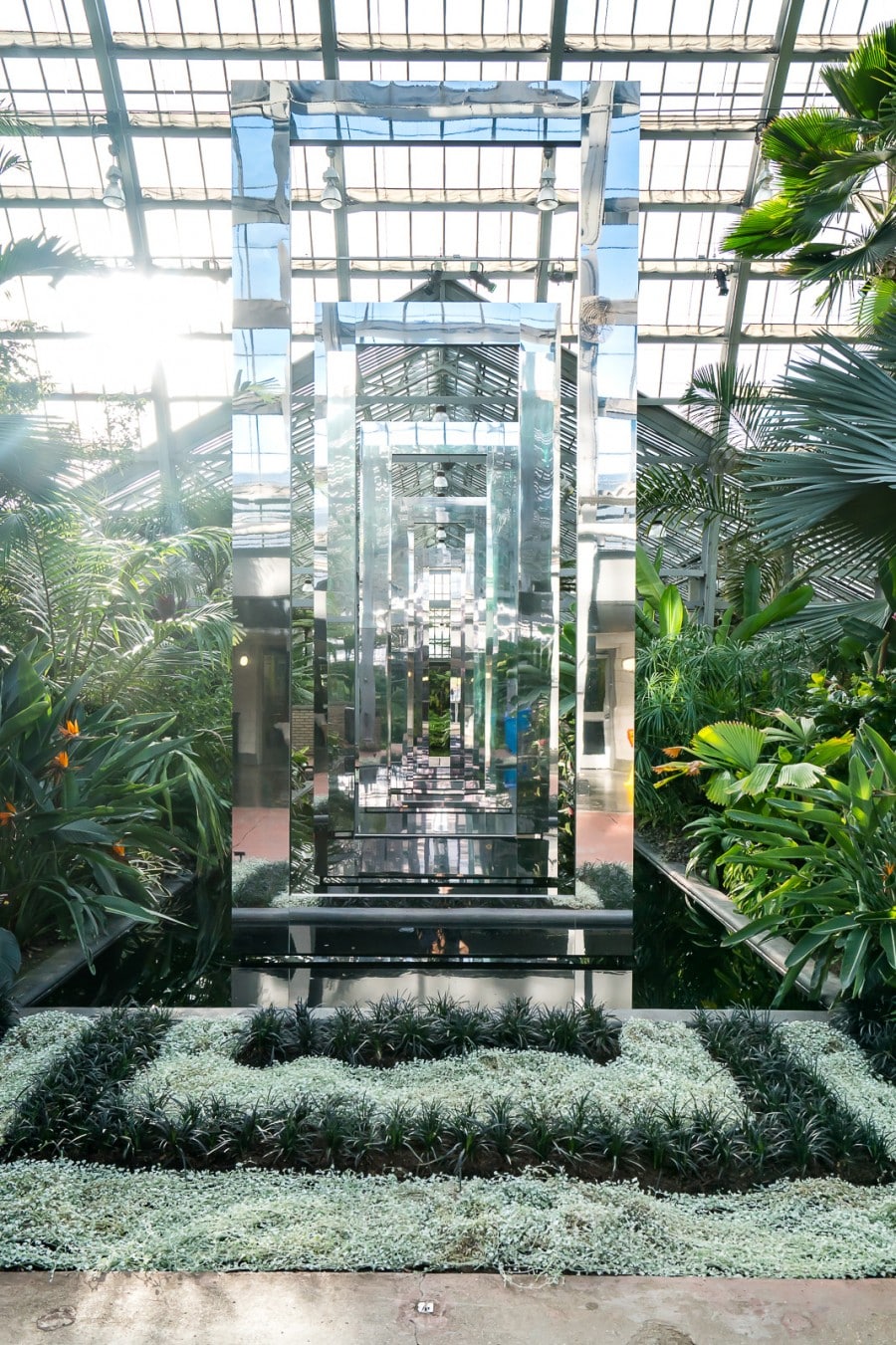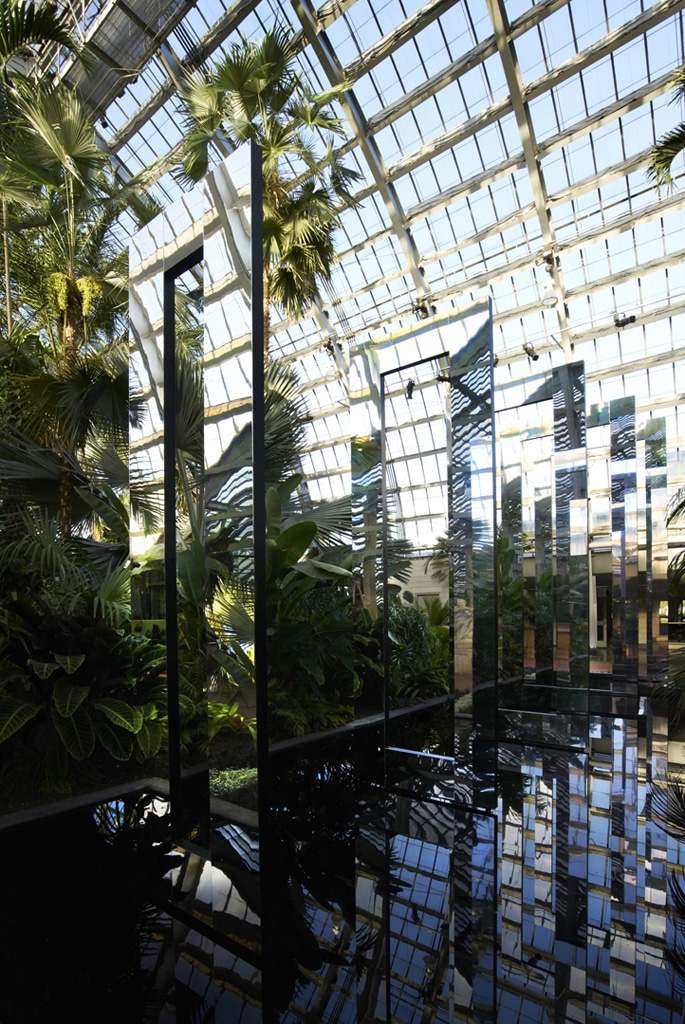Solarise: A Sea of All Colors, 2015
Garfield Park Conservatory is lauded as one of the great architectural masterpieces in Chicago. Completed in 1907 by the famed landscaped architect Jens Jenson this revolutionary building opened as the largest conservatory in the world. The glass structure contains distinct gardens connected by a series of contiguous pathways runnning throughout the space. Majestic gardens present both contemporary and prehistoric plants in this vibrant environment. In 2011, a storm caused significant damaged to the glass building and the plants within the conservatory.
As part of an effort to raise awareness and draw public attention to the conservatory and rehabilitation efforts, Luftwerk was commissioned to create a series of year-long installations throughout the conservatory. Solarise: A Sea of All Colors contained five distinct installations; each in a different garden, developed with a distinct point of view to frame, highlight, and interpret important elements of the garden.
Florescence Perception of color by plants varies greatly from humans. Through photosynthesis of the light spectrum, plants only register two colors: blue as the direction for growth and red as an indication to bloom. Florescence reflected this phenomenon in a canopy of 880 blue and red translucence petal shapes in the Show House of the conservatory. This canopy was activated by light shining through the glass ceiling. Throughout the day, the rising and setting of the sun resulted in a series of colored shadows cast across the floor and the plants below; a visual abstraction of this plant process.
Seed of Light highlighted the simple essence of water. The kinetic chandelier of lit acrylic circular trays reflected water ripples from single drops of water falling onto the trays. As drops of water hit the tray beneath the light shining on the chandelier cast sparkling shadows from these ripples across the floor of the conservatory. The circular geometry of the sculpture was inspired by the universal symbol of creation, the Flower of Life.
Prismatic developed as both an installation and performance, Prismatic was an abstract interpretation of the geometry within desert plants. This series of five rotated and extended triangular acrylic frames appeared to hover above the cacti in the garden. In the day, the interaction of the sunlight shining through the glass roof with acrylic spokes refracted and cast unique light shapes throughout the garden. In the evening, Prismatic was illuminated by pin-spot LED lighting, casting rainbows across the conservatory’s Desert House. An original music composition by Owen Clayton Condon used cacti from the conservatory’s collection and accompanied the suspended sculpture.
The Beacon welcomes evening visitors to the Conservatory. LED nodes line and highlight the vertical structure of the glass building. The nodes translate a live data feed gauging the course and speed of wind passing through Chicago in a dynamic display. This visual interpretation abstracts data to highlight the natural environment surrounding the unique ecosystem of nature within the Conservatory. Developed as a permanent installation, this permanent piece leaves a mark of the Solarise exhibition.
Reviews:
CS Modern Interiors
New Media Caucus—College Art Association
Condé Nast Traveler
The Architect’s Newspaper
Time Out Chicago
Chicago Reader | People Issue 2015
- Site
- Garfield Park Conservatory
- Photography
- John Faier, Peter Tsai
- Commissioned by
- Chicago Park District
Florescence: Mixed media, acrylic, suspension wire, LED lighting, Size: 40’ x 80’
Seed of Light: Mixed media, aluminum trays, solenoid valves, LED, Size: 10’ x 15’ x 15’
Prismatic: Equilateral prism rods, aluminum
The Beacon: LED, magnets lighting control unit, Photovoltaik array, 150′ x 50′
Permanent Installation, Garfield Park Conservatory | Chicago, IL

